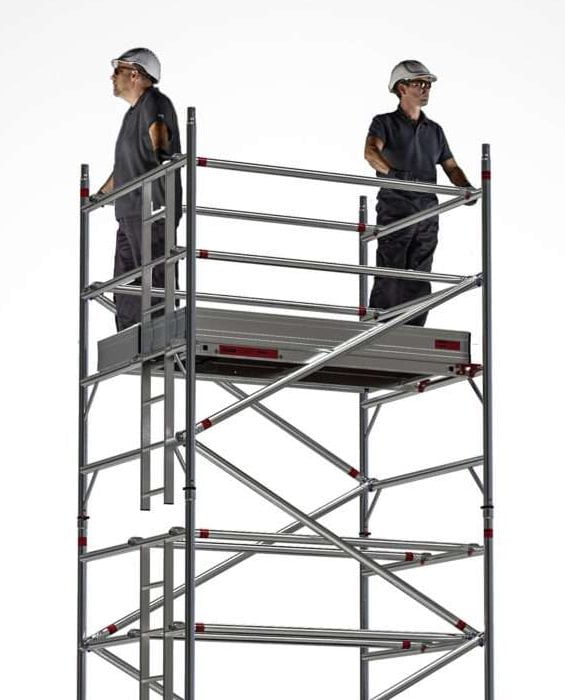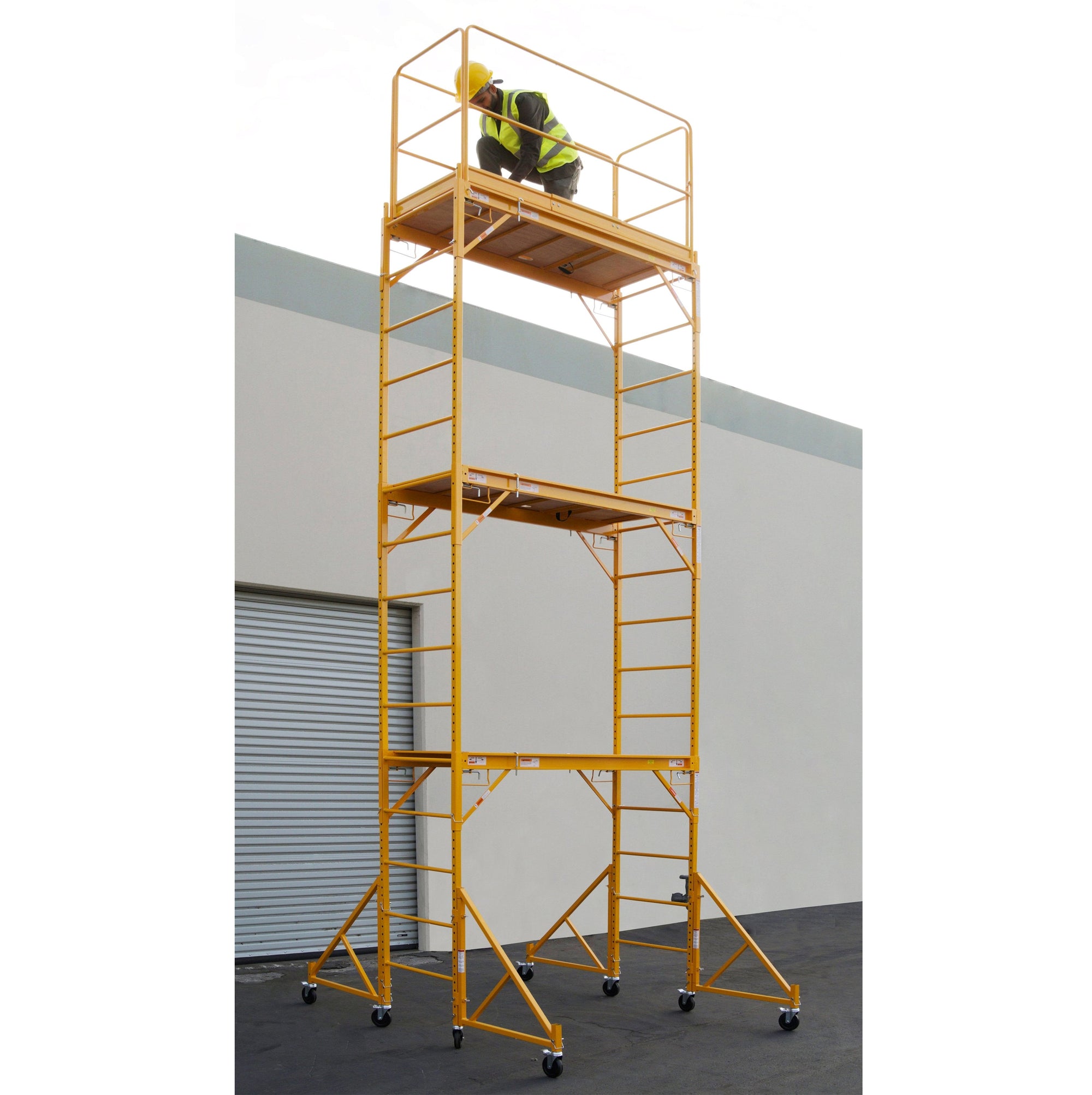Temporary Roof Scaffolding to Ensure Safe Working Conditions During Projects
Temporary Roof Scaffolding to Ensure Safe Working Conditions During Projects
Blog Article
Exploring the Various Types of Scaffolding Used in Building And Construction Tasks
The building and construction sector depends heavily on numerous types of scaffolding to meet particular project demands, each offering distinctive advantages and applications. Traditional framework scaffolding offers a strong structure for basic jobs, while suspended scaffolding is necessary for work on high-rise frameworks.

Standard Frame Scaffolding
Standard framework scaffolding is one of the most commonly utilized methods in the building industry as a result of its toughness and convenience. This system contains horizontal and upright frameworks that are set up to produce a stable system for products and employees. The major components include upright posts, horizontal journals, and diagonal braces, which with each other provide a strong framework that can support substantial tons.
One of the key benefits of traditional frame scaffolding is its adaptability to numerous building and construction projects, ranging from household buildings to huge industrial frameworks. The modular design permits simple setting up and disassembly, making it efficient for both short-term and long-lasting projects. Furthermore, the system can be personalized in elevation and width, accommodating various building designs and website problems.
Safety and security is paramount in scaffolding applications, and traditional framework systems are outfitted with guardrails and toe boards to avoid drops and guarantee employee protection. Moreover, normal inspections and adherence to safety laws are important in maintaining the integrity of the scaffold. Generally, typical framework scaffolding continues to be an essential option in the building and construction sector, supplying a dependable platform for labor and improving total project efficiency

Suspended Scaffolding
Suspended scaffolding offers an unique option for building and construction projects that need access to elevated surfaces, especially in scenarios where traditional frame scaffolding might be not practical. This type of scaffolding is usually put on hold from the roofing system or top levels of a structure, using a system of pulleys, ropes, and systems to create a functioning room that can be gotten used to various elevations.
Among the key benefits of suspended scaffolding is its versatility. It can be easily rearranged or lowered to fit adjustments in building requirements, making it excellent for jobs such as window installment, façade work, and upkeep on skyscraper buildings. Furthermore, the marginal footprint of suspended scaffolding permits far better use of ground area in metropolitan environments, where room is typically minimal.
Safety is an essential factor to consider in the usage of suspended scaffolding. On the whole, suspended scaffolding supplies a efficient and reliable option for accessing hard-to-reach areas in numerous construction situations, boosting both performance and safety on site.
System Scaffolding
System scaffolding, often considered a modern-day solution in the scaffolding sector, is composed of pre-engineered elements that can be swiftly constructed and adapted for numerous building and construction jobs. Scaffolding. This type of scaffolding is defined by its modular layout, which permits for versatility and performance on scaffolder role task sites, accommodating architectural demands and different elevations
Normally made from high-strength steel or aluminum, system scaffolding supplies enhanced longevity and stability. The elements include upright posts, straight ledgers, and angled dental braces, which interconnect securely, making certain a robust structure. The style typically includes standardized installations, simplifying setting up and disassembly procedures, consequently lowering labor time and prices.

Rolling Scaffolding
Rolling scaffolding is a flexible alternative to conventional set scaffolding, developed for mobility and convenience of use on construction sites. This sort of scaffolding consists of a system sustained by frames with wheels, enabling workers to quickly move it as needed. The flexibility feature significantly boosts efficiency, as it lessens downtime related to constructing and disassembling fixed scaffolding.
Usually constructed from lightweight products such as light weight aluminum or steel, rolling scaffolding provides a durable yet mobile solution for tasks requiring regular repositioning - Scaffolding. It is particularly beneficial in tasks such as paint, drywall installment, and electrical job, where access to different elevations and locations is essential
Safety is extremely important in rolling scaffolding style, with attributes such as locking wheels to prevent unintentional movement when being used, and guardrails to safeguard employees from falls. Additionally, several designs are adjustable in elevation, accommodating various job demands.
Cantilever Scaffolding

The style of cantilever scaffolding normally involves making use of brackets or arms secured to a structure or structure, allowing the system to prolong outside safely. Security is paramount; therefore, these scaffolds need to be engineered to withstand various tons and environmental conditions. Routine examination and maintenance are vital to ensure structural honesty and worker safety and security.
Cantilever scaffolding is preferred for its adaptability and effective use of area, making it a prominent selection in metropolitan environments where space constraints are usual. It promotes easier accessibility to high elevations, inevitably adding to the total effectiveness of construction jobs. As with all scaffolding types, appropriate training and adherence to safety and security criteria are crucial for workers utilizing cantilever scaffolding.
Conclusion
To conclude, the varied kinds of scaffolding used in building projects each serve distinctive functions customized to particular site demands. Typical structure scaffolding offers security, while put on hold scaffolding uses convenience for elevated tasks. System scaffolding promotes quick assembly, and rolling scaffolding improves flexibility for varying work atmospheres. Cantilever scaffolding properly deals with challenges in urban settings. Comprehending these scaffolding types is vital for enhancing security and productivity in building and construction, eventually contributing to the successful completion of tasks.
Typical frame scaffolding offers a tough structure for basic jobs, while put on hold scaffolding is necessary for job on high-rise frameworks.Moving scaffolding is a functional alternative to traditional fixed scaffolding, designed for mobility and ease of usage on construction websites. As with all scaffolding types, correct training and adherence to safety and security requirements are critical for employees utilizing cantilever scaffolding.
Typical frame scaffolding supplies security, while put on hold scaffolding uses flexibility for elevated tasks. System scaffolding helps with fast assembly, and rolling scaffolding improves wheelchair for varying job settings.
Report this page